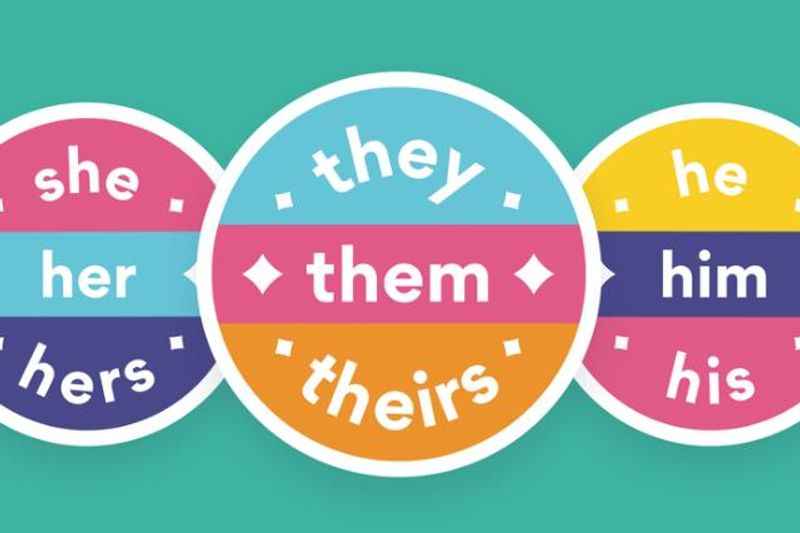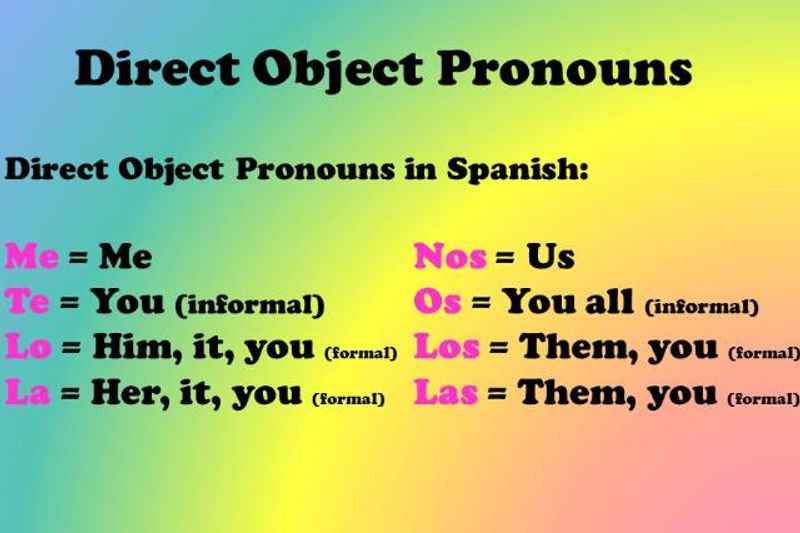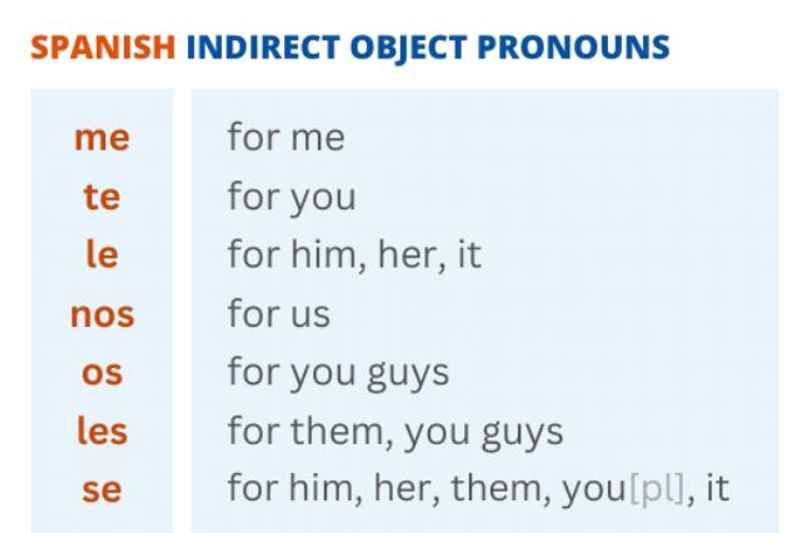Direct Object Pronouns - Spanish For Beginners

We know how tricky Spanish grammar can be. Direct object pronouns are a particular aspect of Spanish grammar that many learners struggle with.
In this article, we break things down clearly and concisely, showing you how easy it actually is to learn direct object pronouns in Spanish.
Read on to find out what direct object pronouns in Spanish are, when to use them, and how to put them into practice.
First Things First - What Are Direct Object Nouns? (English Context)

Put as simply as possible, a direct object noun is a place, person, or thing, to which actions can occur. Here is an example sentence:
Joel grabbed the football.
In the above, the football is the direct object, with the action being performed by Joel, who is grabbing it. Let’s try another…
Joel grabbed the football, then he kicked the football.
Twice, the direct object is the football, but because we’ve repeated it, the sentence sounds a little clunky and unnatural. That’s where the direct object pronoun comes in!
Joel grabbed the football, then he kicked it.
The football is still the direct object, but the pronoun 'it' comes in to represent it for a second time, allowing for a much clearer and concise sentence. What about if we throw another character into the mix?
Joel grabbed the football from Henry, then kicked it back to him.
In this instance, it is a direct pronoun, referring to the football, but 'him' is also a direct pronoun, referring to Henry. Get it? Now let’s figure it out in Spanish!
Direct Objects - How Do They Work In Spanish?

Although in español, direct object pronouns work in much the same way as the English examples provided above, there is one significant difference - rather than appearing after the verb, for Spanish, the direct object comes before it.
For example…
Joel grabbed the football and kicked it
turns into
Joel aggaró el balón y lo pateó
with lo being the direct object pronoun meaning “it”
I ate the burrito
becomes
Me comi el burrito
And when you throw a direct object into the mix, you get
Me lo comi
which means
I ate it
with lo being the direct object pronoun again.
Direct Object Pronouns with Negatives
But what about if a sentence is negative?
No como carne (I don’t eat meat).
Your verb here is como, and the direct object ‘meat’ comes afterward
With a direct object pronoun in place of carne/ "meat" the sentence becomes
No lo como (I don’t eat it).
The direct object pronoun ‘lo’ comes before the verb.
Direct Object Pronouns and Gender

- Me - Me (referring to "me" or "to me")
- Te - You (informal, singular) (referring to "you" or "to you")
- Lo - Him/It (masculine singular) (referring to "him" or "it" or "to him" or "to it")
- La - Her/It (feminine singular) (referring to "her" or "it" or "to her" or "to it")
- Nos - Us (referring to "us" or "to us")
- Os - You all (informal, plural) (referring to "you all" or "to you all")
- Los - Them (masculine plural) (referring to "them" or "to them")
- Las - Them (feminine plural) (referring to "them" or "to them")
When it comes to the main direct object pronouns t_e, me, os,_ and nos, there’s no need to panic, as these DOPs have nothing to do with gender.
However, as for the other four lo, la, los, and las, masculine and feminine forms are important.
Whether you use lo or la depends on the gender that has been assigned to the direct object. For instance, burrito is a masculine noun, so when you say "I ate it", me lo comi, you use the masculine pronoun lo.
Here Are Some Examples
Max kissed Sophie
In Spanish, that would be
Max besó Sophie
Or, with a direct object pronoun
Max kissed her
In Spanish, you would instead say
Max la besó
with la being the feminine pronoun, because Sophie is a girl.
Distinguishing between gender is fairly straightforward. Words ending in an ‘a’ are usually feminine, whereas those ending in ‘e’ are masculine. That being said, there are, of course, exceptions to this rule. It’s a good place to start for beginners though.
The most important thing to remember is that, whenever you’re using the pronouns lo, los, la, and las, the gender of the pronoun must always match up with the gender of the direct object.
Teaching Kids Direct Object Pronouns

Teaching kids direct object pronouns as well as indirect object pronouns can be tricky, but luckily, kids have a remarkable ability to absorb and learn languages quickly.
Involving them in your own learning journey can create a fun and interactive experience. By teaching kids about direct object pronouns, you can lay a solid foundation for their language skills and help them become confident Spanish speakers.
Here are a few basic sentences to introduce direct object pronouns to kids:
- Yo veo la pelota - I see the ball
Yo la veo - I see it - El niño come la manzana - The boy eats the apple
El niño la come - The boy eats it - Ella tiene el juguete - She has the toy
Ella lo tiene - She has it
Encourage kids to practice using direct object pronouns by translating simple sentences into Spanish. For example, ask them to say "I love you" in Spanish, which is te amo.
This way, kids can grasp the concept of object pronouns and apply them in everyday conversations.
Here are three examples of sentences that demonstrate the use of indirect object pronouns:
- Le di un regalo a María - I gave Maria a gift
Here, the indirect object pronoun is "le," which replaces a María ("to Maria").
- Nos enviaron una invitación - They sent us an invitation
In this sentence, the indirect object pronoun is nos, which replaces a nosotros ("to us").
- Ella le contó un secreto - She told him a secret
Here, the indirect object pronoun is le, which represents a él ("to him").
In these examples, the indirect object pronouns (le/nos) are used to replace the recipients or beneficiaries of the actions (Maria, us, him).
Teaching kids direct object pronouns alongside your own learning journey can be a mutually beneficial experience. They can learn from your guidance, and you can reinforce your knowledge by explaining and practicing with them.
Indirect Objects and Pronouns in Spanish

- Me - To me (referring to "me" or "to me")
- Te - To you (informal, singular) (referring to "you" or "to you")
- Le - To him/to her/to you (formal, singular) (referring to "him," "her," or "you" or "to him," "to her," or "to you")
- Nos - To us (referring to "us" or "to us")
- Os - To you all (informal, plural) (referring to "you all" or "to you all")
- Les - To them/to you (formal, plural) (referring to "them" or "you all" or "to them" or "to you all")
In the Spanish language, understanding indirect objects and their corresponding pronouns is also crucial for fluent communication. By grasping the concept of indirect objects, you can convey information about recipients or beneficiaries in a concise manner.
Transitive verbs, such as "give," "send," or "tell," often require both a subject and an object. Indirect objects indicate the person or entity to whom the action is directed.
For instance, in the sentence "I gave Maria a book," the indirect object is "Maria." When using indirect object pronouns, we replace the noun with a corresponding pronoun.
Le di un libro a María - I gave her a book.
Third-person pronouns, such as él ("he"), ella ("she"), or ellos/ ellas ("they") are often used in sentences involving indirect objects. These pronouns help identify the recipients or beneficiaries of the action.
Él les compró un regalo - He bought a gift for them
The pronoun "them" represents the indirect object. In Spanish, it becomes les.
Learning Spanish for Travel

Travelers should consider learning a bit of Spanish for a variety of reasons. First and foremost, Spanish is one of the most widely spoken languages in the world, with over 460 million native speakers.
It is the official language in 21 countries, including Spain, Mexico, Colombia, Argentina, and many more.
By learning Spanish, travelers can communicate with locals, navigate their way through different regions, and gain a deeper understanding of the local culture and customs.
Using the correct direct object pronoun is helpful for effective communication. It ensures that the pronoun matches the gender and number of the noun it replaces. Understanding how direct object pronouns work allows travelers to express themselves accurately and avoid repetitive language.
By mastering direct object pronouns, travelers can confidently engage in conversations, understand instructions, and express their needs in Spanish-speaking countries.
As you can see, learning Spanish and understanding direct object pronouns enhance the travel experience by facilitating communication, fostering cultural connections, and enabling travelers to express themselves effectively.
So, whether exploring the vibrant streets of Madrid, relaxing on the beaches of Mexico or immersing yourself in the rich history of Argentina, knowing a bit of Spanish and how to use direct object pronouns can greatly enhance the journey.
Key Takeaways

Direct object pronouns replace direct objects in sentences, making them more concise. Instead of saying yo tengo el libro ("I have the book"), we can use the direct object pronoun and say yo lo tengo ("I have it").
To replace the direct object, we use direct object pronouns. In Spanish, there are eight direct object pronouns: me, te, lo, la, nos, os, los, and las.
Additionally, distinguishing between direct object nouns and pronouns is crucial in Spanish to achieve clarity and conciseness in communication.
Understanding the difference helps avoid repetitive language and ensures that the listener or reader can easily grasp the intended meaning of a sentence.
Direct object nouns are the actual nouns or noun phrases that receive the action of the verb in a sentence. They answer the question "what" or "whom" the action is directed toward.
While direct objects receive the action directly, indirect objects receive the action indirectly. For instance, in the sentence "she gave flowers to her little sister," "flowers" is the direct object, while "her little sister" is the indirect object and noun phrase.
FAQs About Spanish Direct Object Pronouns
Now that you know a lot about Spanish direct object pronouns and a little bit about indirect object pronouns we can check out some frequently asked questions relating to learning Spanish for beginners
How long does it take to learn conversational Spanish?
The time to learn conversational Spanish varies depending on factors such as prior language learning experience, dedication, and regular practice. With consistent effort and immersive learning, one can gain conversational proficiency in several months to a year.
Do I have to learn Spanish if they speak English overseas?
While many Spanish-speaking countries have English speakers, learning Spanish enhances your travel experience and fosters cultural connections. It allows for deeper engagement with locals, understanding local customs, and navigating off-the-beaten-path locations where English may not be widely spoken.
What is a conjugated verb and what is a transitive verb (with an example)?
A conjugated verb in Spanish undergoes changes in form to match the subject, indicating tense, mood, and aspect. For example, the verb hablar ("to speak") is conjugated in the present tense:
- Yo hablo (I speak)
- Tú hablas (You speak)
- Él/Ella habla (He/She speaks)
etc...
On the other hand, a transitive verb in Spanish requires both a subject and an object to complete its meaning. For example:
- Juan lee el libro - Juan reads the book
- María cocina la cena - María cooks dinner
In these sentences, lee (from leer, "to read") and cocina (from cocinar, "to cook") are transitive verbs, as they require a direct object (el libro, la cena) to complete the action.
Summing Up: Direct Object Pronouns
When it comes to language learning, especially Spanish, getting both the right pronoun and the correct gender for that pronoun will make your spoken word sound much more natural.
As long as you’re careful to follow the pre-established rules, particularly regarding where the pronoun should be placed in the sentence (which is only tricky when you throw multiple verbs into the mix) then you’ll be absolutely fine.
Take your time and engage with Spanish media for extra exposure. Listen to Spanish podcasts, watch Spanish TV, and read Spanish books. Have fun learning Spanish grammar - it's not so bad!
If you want an easy, simple to understand breakdown of Spanish, check out Spanish Grammar Made Simple with James, a Spanish grammar course created by a fluent Spanish speaker with the core aim of simplifying Spanish grammar. Get 60% off via the link below.







